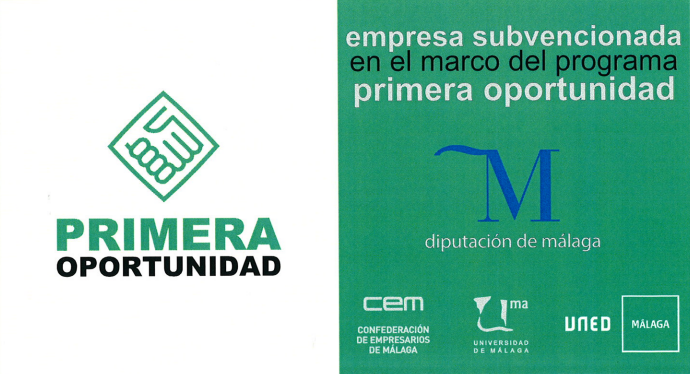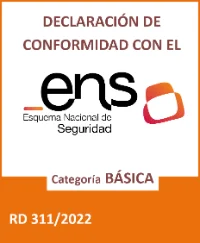Are you interested in learning how to carry out market research? At acciónmk.com we offer you a comprehensive guide designed specifically for the self-employed, micro-enterprises and SMEsThis allows you to carry out market research in a cost-effective and efficient way.
Learn about the steps involved, the affordable techniques, and the importance and benefits to carry out market research.
We include practical tips and examples of methods you can use to gather information about your competitors and your customers, as well as to identify the most important ideal market segments for your businessFrom data collection, observation, interviews and surveys to competitor analysis. We also provide you with information on the associated costs to market research.
If you need professional assistance, consider contacting market research companies who can offer specialised services tailored to your business needs.
Let's talk about your market research - write to us now!
- What is market research?
- What is market research for?
- What is the price of market research for a company?
- How to Conduct Market Research
- Conducting Market Research with Surveys and Interviews
- Understanding and Examining your Rivals in the Marketplace
- Identify your Target Audience or Buyer Persona
- Development of the SWOT analysis and the research findings
What is market research?
A market study is essential research for assess commercial and economic viability of an idea, business project, product or service.
This process makes it possible to foresee how potential customers and competitors will respond The market is nowadays characterised by its high level of competition and the fact that it is a very important factor in the development of a specific product or service, either for its launch or its repositioning in the market. Nowadays, characterised by its high competitiveness, digitalisation and constant changemarket research is crucial to understand how both our customers and our competitors are evolving.
We often think that market research is out of reach or not worthwhile. However, this perception is incorrect. Thanks to new technologies and web applications, it is now possible to carry out market research tailored to your needs and budget. for the self-employed and small businesses.
In this article, we provide you with a series of practical tips so that you can carry out your own market research in a simple and economical way, obtaining results that will help you to manage your business better. If you would like a more in-depth study at a later date, you can always turn to specialised consultancies.
What is market research for?
The importance of market research for your business is more important than it seems. Conducting market research is fundamental to achieving a number of key business objectives:
- Identify and land business opportunities: Market research helps you to discover new opportunities and to realise them effectively.
- Know the profile and commercial behaviour of your target customer: This analysis allows you to better understand your ideal customer, their interests in the products or solutions you offer, the price they are willing to pay and their usual places of purchase.
- Identify the different market segments or niches: Your business may target several customer profiles. Market research will help you to identify and understand these segments.
- Determine the current and future size of the market and the level of competition: It is crucial to know whether your market is growing or shrinking and whether it is attracting many new competitors.
- Know your competition well: Find out who your competitors are, what products or services they offer, at what prices, how they differentiate themselves and what their competitive advantages are.
- Anticipate the reactions of competitors and suppliers: Market research allows you to predict how your competitors and suppliers will react to your product launch and advertising campaigns.
- Identify possible elements of risk: Detect factors that could radically change your sector, such as the emergence of new technologies or changes in legislation.
What is the price of market research for a company?
The cost of a market study for a company can vary significantly depending on several factors, such as the depth and complexity of the study, the size of the company, the geographical scope, the methodology used and the experience of the professionals involved.
Market studies can range from a few hundred to several thousand dollars or euros, and even more in the case of very specialised or large studies. It is important to note that the price usually reflects the quality and completeness of the study, as well as the resources and expertise of the team conducting the study.
To obtain a precise budgetit is advisable to contact with market research companies or specialised consultancies and ask for prices based on your specific needs and the objectives of the study. In addition, it is important to consider the potential return on investment that could be derived from the information obtained through the market study.
How to Conduct Market Research
To conduct effective market research, here are some techniques and steps you can follow:
What data do I need to conduct market research?
The first step we recommend is to collect and take advantage of all the information already available about your sector, especially on google, industry magazines, . We recommend the following actions:
- Free information on the internet: Look for articles and reports on the situation of your sector, statistics, data and censuses. Visit the websites of business associations in your sector, the Regional Ministry and official bodies related to your sector in your Autonomous Community, as well as the national and regional statistics institutes, and the Chambers of Commerce and Industry.
- Information on companies in the sector: Check the websites of your competitors and of companies engaged in the same activity in other provinces. You will obtain information about their commercial strategy (products, prices, communication, offers) and their relevance. Visit the websites of consultancy or reference companies that may have carried out sectorial studies. Use tools such as Similarweb to identify other competitors.
- Payment information on the Internet: Professional SEO and SEM analysis tools (Moz, Semrush, Sistrix, Ahrefs) offer valuable data on keywords and the performance of your competitors. A paid subscription for a few months can be a very profitable and affordable investment.
- Sectoral fairs: Identify and attend trade fairs related to your activity, even if it means travelling to cities such as Madrid or Barcelona. During times of social distancing, investigate the possibility of attending virtual conferences.
- Specialised magazines: Subscribe to specialist print magazines about your sector, which are often published by associations, agencies and consultancies. Industry trade fairs are good places to identify these magazines.
- Existing information in the company: If your business is already up and running, collect and analyse all available internal information: accounting, sales and production reports, results of advertising campaigns, past contracts and reports, etc.
Data Collection and Observation
The next step is to directly observe what is happening in the market using low-cost techniques that you can do yourself:
- Traffic data collection at a venue: If you are considering renting or buying commercial premises, measure the number of people passing by at different times of the day, differentiating by gender, age or other socio-economic characteristics. Supplement this information with interviews or surveys.
- Observation of customers in competing establishments: Visit your competitors and observe the socio-economic characteristics of their customers, the products most in demand and their buying behaviour. If your competition is online, check the comments on their blogs and social networks.
- Observation of customers in your own establishment: Interact with your customers to deepen your knowledge of them. Use the mystery shopping technique to evaluate the quality of the service you offer.
- Analytics on Google, Facebook, Instagram and YouTube: Nowadays it is essential to analyse the positioning of your competitors on Google and social networks. Go deeper into this point to get a complete view of the market.
We are here to help you with your market research - send us a message!
Conducting Market Research with Surveys and Interviews
The next step in your market research is to deepen your knowledge of your target customer and their behaviour: demographic and socio-economic characteristics, opinions about your product or service, degree of knowledge about it, purchase intention and, very importantly, consumption behaviour, etc... The best strategy is to ask questions and obtain more information:
- Interviews: Talk to industry experts or potential clients to gather detailed information. Prepare a script with the aspects you want to explore. If interviewing customers, conduct at least five interviews to get a more complete picture.
- Focus groups: Gather 5 to 8 potential customers and present your idea or product for them to evaluate. This technique is useful to detect motivations and reactions. Record the session so as not to miss any details. Although they provide valuable qualitative information, these techniques are not statistically representative, so you should not base all your conclusions on them.
- Surveys: They are a more reliable method, although they may require more time or money. Use survey templates available online and conduct at least 40 surveys with potential customers. This will provide you with more structured and quantitative data.
- Survey panels: If you do not have direct access to respondents, consider hiring a company that can provide the sample you need. This is similar to a survey, but the respondents are selected by the specialised company. This technique also allows for repeated surveys over time to observe trends.
What are surveys used for in market research?
Surveys are the main tool of market research.. Before analysing a market, we must have information that allows us to draw the most accurate scenario possible, which will help us to draw conclusions.
We do this by directly asking the consumers who make up the market.
There are two types of survey routes:
- Online Surveys: This type of survey includes links to websites, emails and social media.
- Offline surveys: This includes telephone, face-to-face and physical mail surveys.
Surveys can be used to achieve different objectives:
- Collect geographic, demographic and socio-cultural data on our clients.
- Research a market we want to access.
- Analysing the image of a brand to target positioning.
- Seek business opportunities.
Understanding and Examining your Rivals in the Marketplace
Detailed competitor analysis is the fourth step in effective market research. There are two main reasons for carrying out this analysis:
- Discover Featured Actors: Identifying who are the players that stand out and those that do not, which is crucial for detecting business opportunities, success factors and market movements.
- Anticipate Competitor Reactions: The launch of your venture could generate a response from your rivals, especially if you start to capture their clientele. It is therefore prudent to anticipate their possible strategies.
In the detailed content we have developed on competitive analysis, you will find extended information on:
- Targets to be set.
- Common Slips.
- Economic Strategies for Assessing your Competitors, ideally before you start your business:
- Explore Websites and Social Networks: Analyse your opponents' advertising strategy using SEO tools. The use of keyword tools such as Adwords is beneficial for finding opportunities.
- In Person Visits: Conducts in-person visits to the main competitors to carry out an observational analysis, following a predefined scheme with the variables of interest.
- Location Map: Map the location of your competitors and determine their area of influence, especially for businesses with a local presence.
- Sector Leaders' Research: Find out about industry leaders to understand the competitive landscape.
- Reports and Company Profiles: It generates detailed reports and profiles of competing companies.
- Comparison Table: Create a comparison table to assess the strengths and weaknesses of your competitors.
If you have questions about market analysis, contact us!
Identify your Target Audience or Buyer Persona
Once you have conducted a thorough market study, you will be able to identify the different types of customers that make up the market and group them into similar market segments or niches. These segments are characterised by sharing specific attributes such as origin, economic level, preferences, culture, among others.
It is essential to select your target audienceThis will allow you to tailor your marketing strategies to their needs and consumption patterns. This will allow you to adjust your marketing strategies to their needs and consumption patterns. Keep in mind that the current market trend is towards greater specialisation, and targeting a specific type of customer is an effective strategy.
The most advisable technique for this is the creation of your buyer personaa fictitious representation of your ideal customer. This profile includes demographic, sociological and behavioural analysis, and is extremely useful for understanding their buying motivations. This knowledge is key to empathising and connecting with the customer, making sure you know their needs and how to meet them.
Development of the SWOT analysis and the research findings
The SWOT (Strengths, Weaknesses, Opportunities, Threats and Opportunities) analysis is a strategic tool that allows you to assess the situation of your company or project from different perspectives. It identifies the internal and external factors that can influence the development of your business.
Expansion of the SWOT Analysis:
- Strengths (F): These are the positive internal aspects of your company that differentiate it and give it a competitive advantage. They can be skilled human resources, advanced technology, strong brand reputation, among others. Identifying these strengths allows you to leverage them and make the most of them.
- Opportunities (O): They represent favourable external factors that may benefit your company in the future. They can be market trends, regulatory changes, technological advances, among others. Recognising these opportunities allows you to develop strategies to take advantage of them and achieve sustainable growth.
- Weaknesses (D): These are the internal aspects that limit your company's performance or put it at a disadvantage compared to the competition. They can be lack of financial resources, obsolete processes, unqualified personnel, among others. Identifying these weaknesses is the first step to correct them and improve competitiveness.
- Threats (A): They represent external factors that may hinder your company's growth or jeopardise its stability. They can be aggressive competition, changes in consumer preferences, economic crises, among others. Identifying these threats allows you to develop risk mitigation strategies and anticipate potential difficulties.
Recommendations for the elaboration of the SWOT Analysis:
We suggest that, as a minimum, you draft a triptych summarising the key findings and carry out a SWOT analysis as a summary, where you can discern the opportunities and risks present in the market and its context, as well as the situation of your company in relation to these, recognising your strengths and areas for improvement.
This analysis will not only help you to better understand your market position, but will also provide valuable information for strategic decision-making and the development of effective action plans.
Need market data? Contact us for a no-obligation consultation.
Sources:
-
Further information










